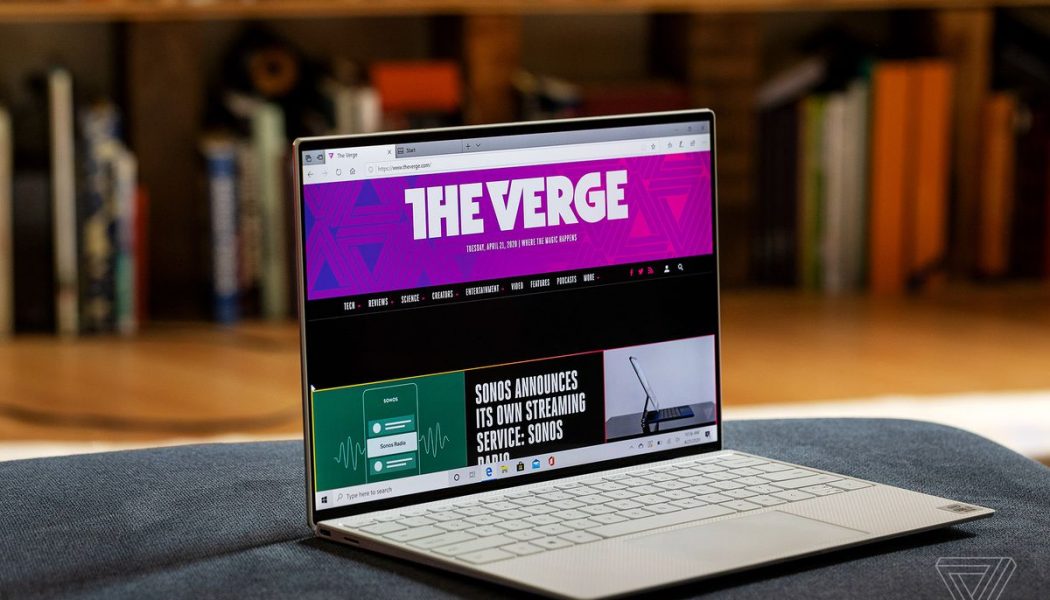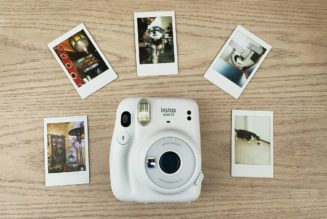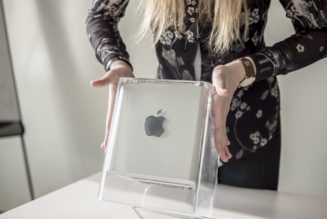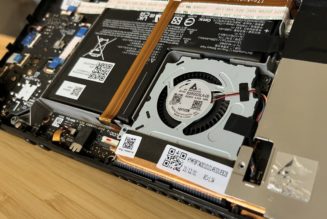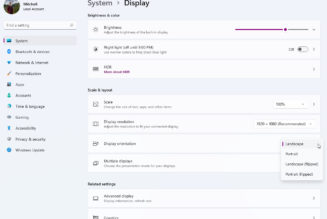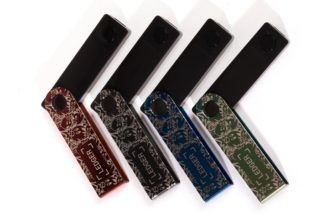Welcome to our guide to the best laptops of 2020. We live in a world where smartphones are ubiquitous, tablets are commonplace, and even smartwatches are a thing that people talk about on the regular. But throughout all of these advances, the humble laptop has persevered — and for good reason. When it comes time to work, whether that’s editing photos, writing a lot of emails, composing documents, or staying in touch with colleagues and family, we’re here to help you find the best laptop for the job.
It’s getting harder to buy a bad laptop, but what separates the best laptops from good laptops is how they balance power, efficiency, portability, and comfort. The best laptop should have a fantastic keyboard and trackpad — after all, those are the two biggest reasons you’d choose a laptop over a smartphone or tablet. Its display should be easy on the eyes, bright, and sharp enough that you aren’t distracted by jagged edges and visible pixels. It should be powerful enough for most anything short of intensive video editing and advanced gaming. It should be easy to carry around from place to place, and it should be able to last all day without needing to be plugged in.
That’s why our pick for the best laptop of 2020 is the Dell XPS 13. It’s a device that does just about everything right. While it’s certainly not a perfect device, there are no major flaws. It’s a great pick for productivity, browsing, and even light gaming.
In our view, the best laptop for Mac users is the MacBook Air (2020). Apple fixed the Air’s biggest problem — the keyboard — and upgraded to more modern processors.
Our other picks for the best laptops of 2020 include the Asus ROG Zephyrus G14, the MacBook Pro 16, and the HP Elite Dragonfly. Check out the full list of best laptops below.
:no_upscale()/cdn.vox-cdn.com/uploads/chorus_asset/file/19915585/akrales_200421_3975_0049.jpg)
The best laptop you can buy
If you’re looking for a laptop that does just about everything right, we recommend Dell’s latest XPS 13. It features a sturdy build, 10th Gen Intel processors with powerful integrated graphics, and a nearly bezel-free 16:10 panel.
The display is what you’ll likely notice first. It has a 91.5 percent screen-to-body ratio with a bottom bezel of just 4.6mm. You can configure the XPS with a 1920 x 1200 pixel or 4K display, but the lower-resolution model should be adequate for anyone who’s not doing creative work. It delivers up to 500 nits of brightness (plenty for working in a bright room or even outdoors) and accurate, vivid colors. It’ll also give you significantly better battery life, in addition to the lower cost.
You can customize a number of other specs; the current base model has a Core i5-1035G1, 8GB RAM, a 256GB SSD, and a 1920 x 1200 non-touch display. (There’s allegedly a model with a Core i3 and 4GB RAM floating around, but it’s not currently listed on Dell’s website. You should avoid it if you see it.) We recommend this base model to anyone who just wants to browse; if you plan on gaming or creative work, it’s worth upgrading for more storage and RAM.
The Ice Lake processor features Intel’s new Iris Plus integrated graphics, which delivered exceptional performance for an integrated GPU. You’ll still want a discrete graphics card for serious gaming, but you’ll have no problem running lighter fare like Overwatch and Rocket League. On those games, it delivers comparable performance to some lower-tier graphics cards, such as Nvidia’s MX150 that came in older versions of the Razer Blade Stealth.
When it comes to the other basics, the XPS beats its competition in just about every way. We got an acceptable seven hours of battery life and even three hours of light gaming. (League of Legends was playable for about 85 percent of that time.) The keyboard and touchpad are among the best in their categories as well. And at just 2.8 pounds and 0.58 inches thick, it’s quite portable.
The biggest knock against the XPS 13 is its limited port selection. With just two Thunderbolt 3 ports, a headphone jack, and a microSD slot, it’s getting into MacBook territory (though it does ship with a USB-C to USB-A dongle). The 720p webcam is also pretty terrible, though, in Dell’s defense, it had to squeeze the thing into a 2.25mm top bezel.
These are legitimate concerns that may drive some users to look elsewhere. But for most users, they won’t be as important as the fundamentals: build quality, keyboard, touchpad, display, and performance. The XPS excels in all of those areas, earning it our top recommendation.
:no_upscale()/cdn.vox-cdn.com/uploads/chorus_asset/file/19834499/awhite_200319_3944_3.0.jpg)
The best laptop for Mac users
The 2020 MacBook Air is the best option for most people who prefer the Apple ecosystem. The Air comes with 10th Gen Intel processors (though in a lower power variation than the XPS 13), a sharp Retina display, and a new scissor-switch keyboard. The base configuration (including a Core i3, 8GB RAM, and 256GB storage) comes in under $1,000, but we recommend that you go for, at minimum, the upgraded model with a Core i5 processor.
MacBook keyboards have been almost universally maligned for the past few years. But the 2020 Air inherited the new-and-improved keyboard from the latest 16-inch MacBook Pro, which brings back the “inverted T” arrow layout and keys with 1mm of travel. There’s no Touch Bar, but that’s a controversial feature already, and most users should be fine with the standard top row and function keys. It does retain the Touch ID fingerprint scanner for easy logins and payment authentication.
You can configure the Air with three different Y-series chips, maxing out at a 1.2GHz quad-core Core i7. We had no problem with the 1.1GHz Core i5, though; it handled Chrome, Slack, Zoom, and Lightroom just fine, and had single-threaded Geekbench scores in line with those of the 16-inch MacBook Pro.
Where you might run into trouble is with heavy workloads that need to run for long periods of time, such as rendering graphics or exporting video. We witnessed some thermal throttling in these cases, and clock speeds were capped at less than half of the processor’s boost. That means if you’re doing heavy creative work or other tasks that really push the CPU, you’re likely to experience slowdown and a very loud fan.
The MacBook Air does have a few other significant weaknesses. The primary one is battery life. We got about five hours using a workflow of Chrome, Slack, Zoom, and Lightroom with the screen on maximum brightness. You’ll probably get more juice if you dim the screen and stick with Apple’s apps, but we expect most people will want to keep the brightness high (it only gets up to 400 nits), and third-party programs are necessities for many.
Despite those downsides, though, the MacBook Air will serve as a competent and reliable device for most users. It has the excellent design, display, performance, and (finally) keyboard that we expect from Apple. Power users who need the Pro probably know who they are; everyone else should be just fine with the Air.
Needs for laptops can vary widely. Some people need to do intense video editing and should pony up for a pro machine. Others just need a reliable keyboard and a few windows, so something less powerful will do. Some might want a super light laptop that can sometimes double as a tablet. Some will want a portable gaming machine capable of running all of the latest titles. Others want a tall aspect-ratio screen, which is much more comfortable to use than a cramped 16:9 display if you primarily do your work in Office documents or a web browser. Below, we’ve got recommendations for all of those use cases and more.
There are plenty of great options in the Windows PC world, complete with the latest processors and designs, and Apple’s MacBook lineup has been recently refreshed entirely with new keyboards and upgraded performance.
:no_upscale()/cdn.vox-cdn.com/uploads/chorus_asset/file/19855768/awhite_200319_3954_6.jpg)
Who it’s for: Everyone who wants powerful gaming (or multitasking) on the go
The Zephyrus G14 is an astonishingly powerful gaming laptop for a low price (relative to other notebooks with comparable hardware). It pairs AMD’s new Ryzen 9 4900HS with an Nvidia RTX 2060 Max-Q GPU and a 120HZ display, and it can run demanding games at their highest settings without a problem. It’s also quite light for such a powerful laptop, weighing just over 3.5 pounds. Its battery life is also impressive for a gaming rig; we got almost nine hours of multitasking.
But you don’t need to be a gamer to appreciate the Zephyrus G14. It’s also a great notebook for business and everyday multitasking with a unique retro design. Plus, the keyboard and touchpad are exceptional and quiet enough not to bother officemates. On the flip side, if you need to use your laptop for videoconferences, the G14 would not be a great choice, as it lacks a webcam.
:no_upscale()/cdn.vox-cdn.com/uploads/chorus_asset/file/19395185/vpavic_191118_3800_0058.jpg)
Who it’s for: Creative professionals and other Mac power users
The 16-inch MacBook Pro is the best Apple laptop for power users. Apple dealt with the biggest complaints that people have historically had about MacBook Pros, and if you can stomach the price, there’s not a lot else to complain about.
Most importantly, the keyboard is good again. The keys have a full millimeter of travel, and while the typing experience isn’t exceptional, it’s a world away from the maligned butterfly keyboard of MacBooks past. It’s fairly quiet, too.
This MacBook also features the best sound you’ll find on a laptop. Apple has crammed three speakers into each side, including two woofers. The result is balanced audio with audible bass and great stereo separation. For those who need a laptop that can crank through editing video, working with multiple audio tracks, or processing large batches of photos, the 16-inch MacBook Pro is the king of the hill.
:no_upscale()/cdn.vox-cdn.com/uploads/chorus_asset/file/19951340/akrales_200507_4005_0212.jpg)
Who it’s for: Business users with deep pockets
If you’re a business professional and money is no object for you or your company, you can’t do better than the HP Elite Dragonfly. The 2020 model is the first Dragonfly that features HP’s super-secure SureView Reflect technology, which tints the screen so that snoops can’t see what you’re doing while you’re working in public. When it’s not tinted, the display gets quite bright (over 700 nits) and has great viewing angles.
The new Dragonfly is also the first laptop to include a built-in Tile tracker. That means if you lose the device, you can use the Tile smartphone app to set off an alarm (if it’s in Bluetooth range) or locate it anywhere in the world using Tile’s crowd-finding network. The tracker can work for a limited time even when the laptop is off.
Almost everything else about the Dragonfly is good; it has some of the best battery life of any laptop on the market (we got over 11 hours), a sleek and stunning 2-in-1 design, and an exceptional keyboard. Plus, it incorporates sustainable material, including ocean-bound plastics and recycled DVDs.
The Dragonfly is pricey, and there are cheaper business laptops that will suit the needs of most professionals just fine. But if you’re looking for the best of the best, it’s the unambiguous winner.
:no_upscale()/cdn.vox-cdn.com/uploads/chorus_asset/file/19500848/awhite_191210_3831_0132.jpg)
Who it’s for: People who want a nice-looking 2-in-1
The Spectre x360 is a premium-level 2-in-1 Windows laptop with the latest processor options from Intel, a vibrant touchscreen, and more port options than are found on other laptops in this segment.
The x360 weighs less than three pounds and is about two-thirds of an inch thick when closed, which makes it very easy to travel with. The latest model has a smaller footprint than before, thanks to shrunken bezels above and below the screen, but it still maintains a full-size keyboard and spacious trackpad. In addition, it provides both facial and fingerprint biometric authentication, so you can choose which way you prefer to log in.
HP updated the trackpad drivers it uses in the latest model to Microsoft’s Precision set and the experience is improved over the older versions to the point where it’s no longer an issue. The x360’s trackpad is now right up there with the best Windows trackpad options (which are still a tick behind what you get on a MacBook) in terms of scrolling, multifinger gestures, and palm rejection.
The biggest argument against the x360 is that it has a 16:9 display, as opposed to the 16:10 or 3:2 screens you’ll find on Dell or Microsoft’s computers. Those taller aspect ratios are much better for productivity work, whether that’s working in two documents side by side or researching on the web without having to scroll as much. But unless you are very particular about your screen’s aspect ratio, most people won’t find this to be a deal-breaker.
:no_upscale()/cdn.vox-cdn.com/uploads/chorus_asset/file/16389469/akrales_190619_3489_0093.jpg)
Who it’s for: Anyone who needs a large screen
The LG Gram 17 is one of the best 17-inch laptops you can buy. Its main calling card is its weight: at just 2.95 pounds, it weighs less than even some 13-inch laptops.
The Gram has a surprisingly robust port selection for such a thin device, including a Thunderbolt 3, two USB 3.0 Type-A, an HDMI, a microSD slot, a headphone jack, and a Kensington lock.
There are some drawbacks to a 17-inch screen. For one, you might have trouble fitting it into smaller backpacks and bags, and it may be ungainly to use on crowded trains and flights. It’s also on the pricey side, and if you don’t need all 17 inches, you can get similar performance and portability with a smaller screen for significantly less.
But if you’re set on a large display, you can’t do better than the Gram 17 for its price. And you’ll be able to see a heck of a lot in split-screen view.
:no_upscale()/cdn.vox-cdn.com/uploads/chorus_asset/file/19278147/vpavic_191008_3713_0207.jpg)
Who it’s for: Video editors, occasional gamers, and other Windows power users
You can configure the XPS 15 with up to an eight-core Core i9 processor, Nvidia’s GTX 1650 graphics, and a 4K OLED screen. Those specs are overkill for most people, but they’re ideal for anyone who needs to edit video or do other heavy creative work with Adobe Premiere. We recommend that anyone who’s just browsing and streaming go for the 1080p screen and a Core i7, which will save you significant money and battery life. (We also experienced some thermal throttling and heat management issues with the i9 unit.)
The XPS 15 isn’t a serious gaming rig, but the GTX 1650 can handle a reasonable gaming load. We were able to run Shadow of the Tomb Raider and The Witcher 3 at medium settings in 1080p. If you’re looking for a large, attractive Windows laptop that packs serious power, this is the one for you.
:no_upscale()/cdn.vox-cdn.com/uploads/chorus_asset/file/19250347/akrales_190930_3689_0135.jpg)
Who it’s for: Anyone who wants a reliable, no-nonsense laptop
Microsoft’s Surface Line includes a number of innovative, quirky products at a variety of prices. The 13.5-inch Surface Laptop 3 is its most “traditional” option, and it’s the best one for most people.
It features an outstanding keyboard and touchpad as well as a sturdy and attractive chassis that’s fairly portable at just 2.89 pounds. And it packs great everyday performance, with enough horsepower to handle Lightroom and Photoshop, and even graphic-intensive tasks in Premiere Pro. The biggest issue it has is the ports that are available: there’s just one USB-C and one USB-A port and no support for Thunderbolt 3.
While the Surface Laptop 3 isn’t a budget product, it’s an all-around excellent device that still won’t break the bank for most shoppers — especially if you can find it on sale.
:no_upscale()/cdn.vox-cdn.com/uploads/chorus_asset/file/19768314/awhite_20200304_3921_0048.jpg)
Who it’s for: Those who want a solid 2-in-1 for an affordable price
You don’t need to break the bank to get a solid Windows laptop. There’s no better proof of that than the Lenovo Yoga C740, which is an all-around solid, reliable device for less than $800.
There’s nothing particularly exceptional or groundbreaking about the C740, but there also aren’t any significant flaws; you’ll get adequate performance, a sturdy convertible chassis, good audio, competent cooling, and decent battery life. In all of these categories, the C740 is one of the best value laptops on the market. It’s a reliable, low-risk option for students, office users, or someone who doesn’t want to pay an arm and a leg.
